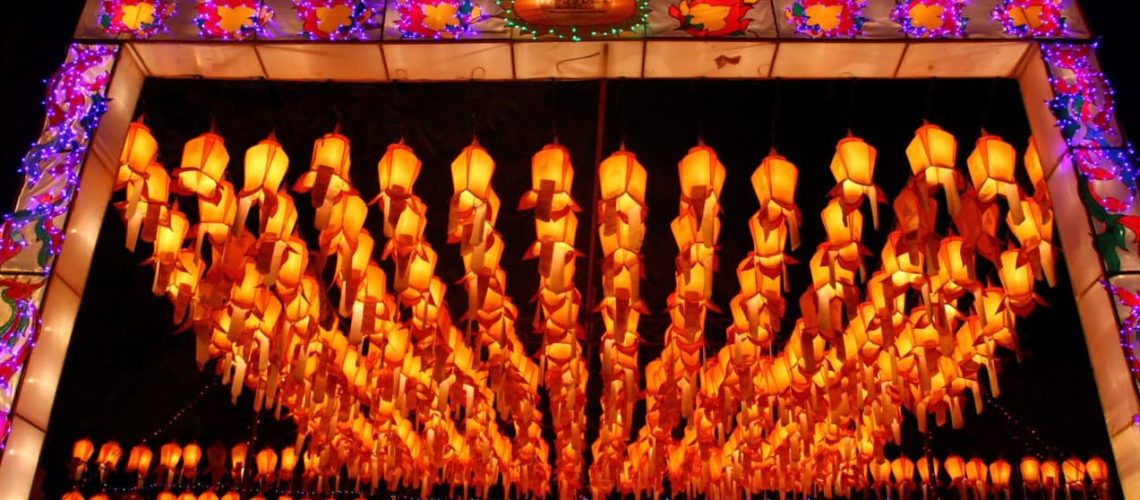Loi Krathong and Yi Peng together form the Thai Lantern festivals that celebrate the twelfth full moon of the traditional Thai calendar, usually falling in November. Loi Krathong is a nationwide celebration whereas Yi Peng is an old Lanna tradition, Chiang Mai being the capital of the ancient Lanna Kingdom. So, what do these festivals mean to Thai people, what is the difference between them, and why should travellers grasp the opportunity to experience these festivals? As the festival takes place this coming weekend in Chiang Mai, we strive to answer these questions with a little help from our experts on the ground.
It is worth noting too that despite recent protests in Thailand, there is no indication of any disruption to the festival this weekend. The protests have been peaceful in nature and restricted to isolated areas so are not a concern for the festival and beyond.
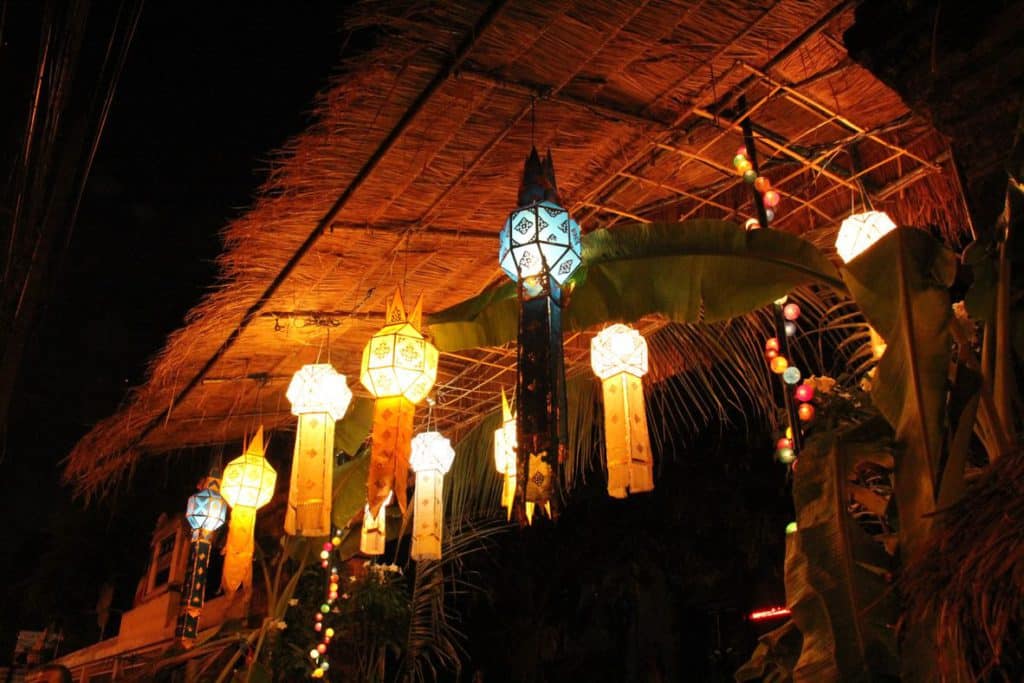
Loi Krathong
In Thai, Loi means to float, and krathong is a name given to a woven basket. So, the term refers to the main activity of the celebration: floating baskets lit by candles upon the river at night. The baskets are traditionally made from banana leaves folded into a flower and decorated with colourful flowers, incense, and a candle. The symbolic act of floating the krathong on the river is the culmination of a reflective process. Our Operations Manager for Chiang Mai and local resident, Porjai Chaiwongyart, or Nuk for short, explains the significance.
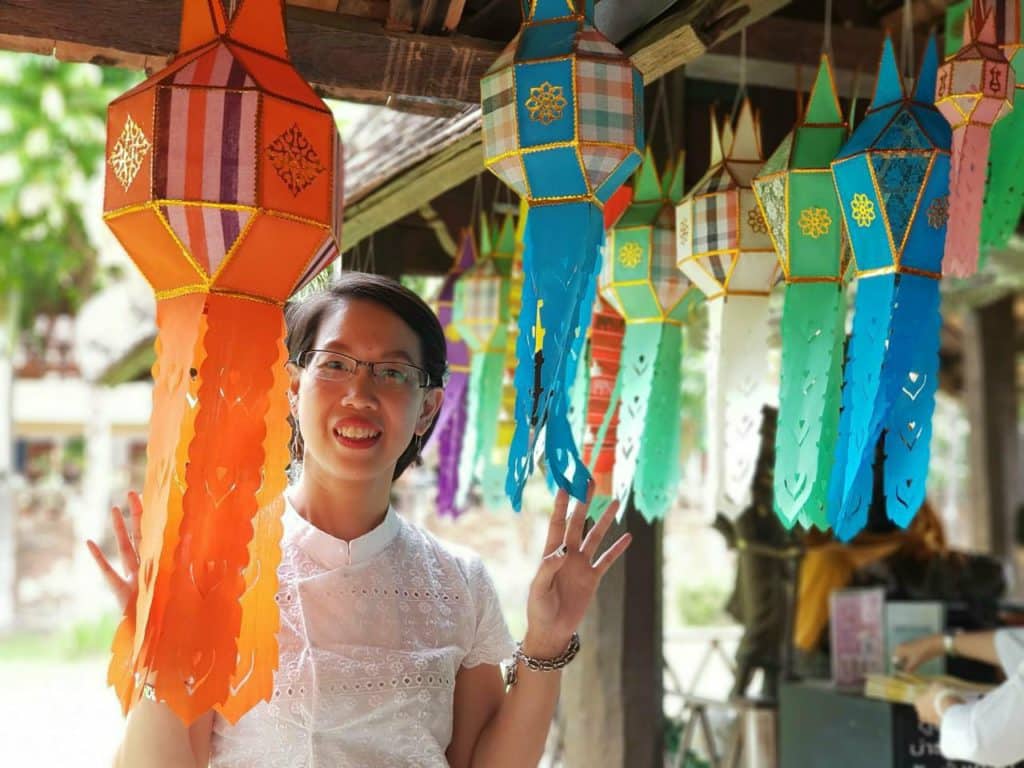
“As we let go of the Krathong, we symbolically pay homage to the river goddess, letting go of our hatred and anger, asking for forgiveness for negative thoughts, and asking for good luck in the future and in the next life.”
This purification ceremony is the result of a longer process of reflection for Nuk in the week leading up to Loi Krathong.
“It is essential that we make the krathongs ourselves, either at home or in the temple, so that we can begin to consider our actions and the mistakes that we have made. It’s also fun, of course, to create the beautiful krathongs and decorate them ourselves.”
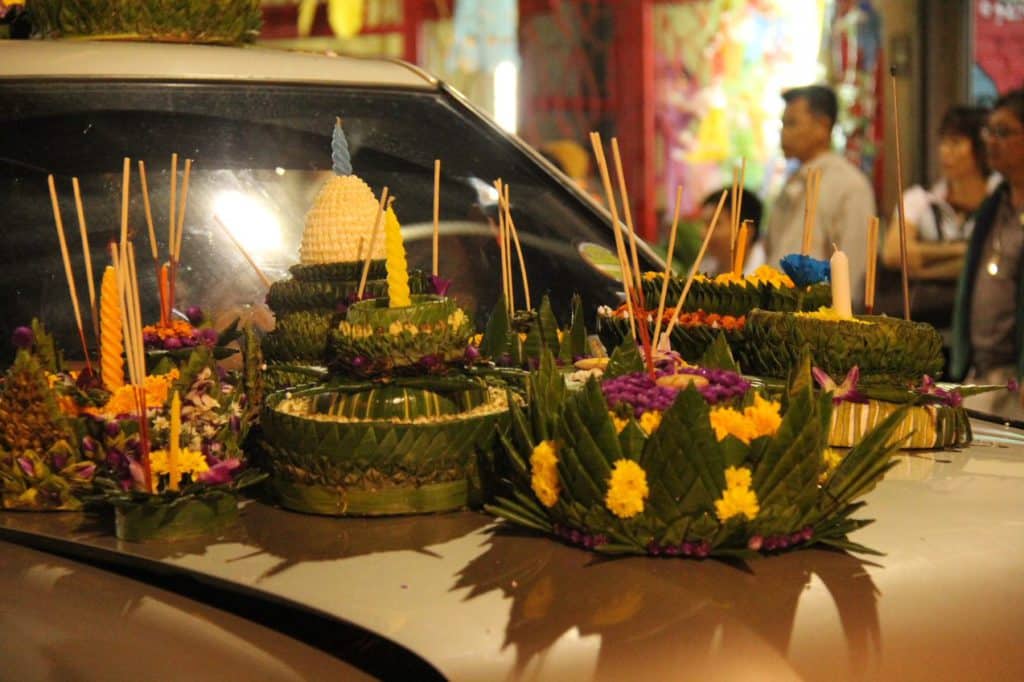
Yi Peng
Nuk helps to explain the difference, or lack thereof, between Yi Peng and Loi Krathong.
“Actually, the celebrations are for the same reason! They are both honouring the Buddha and the occasion of the twelfth moon. Well, actually, Yi means number 2 and Peng means full moon: the northern lunar calendar is 2 months ahead of Thai lunar calendar, that’s why we call the celebration Yi Peng rather than Loi Krathong. Yi Peng is a Lanna tradition that has been incorporated together with Loi Krathong festivities in Chiang Mai.”
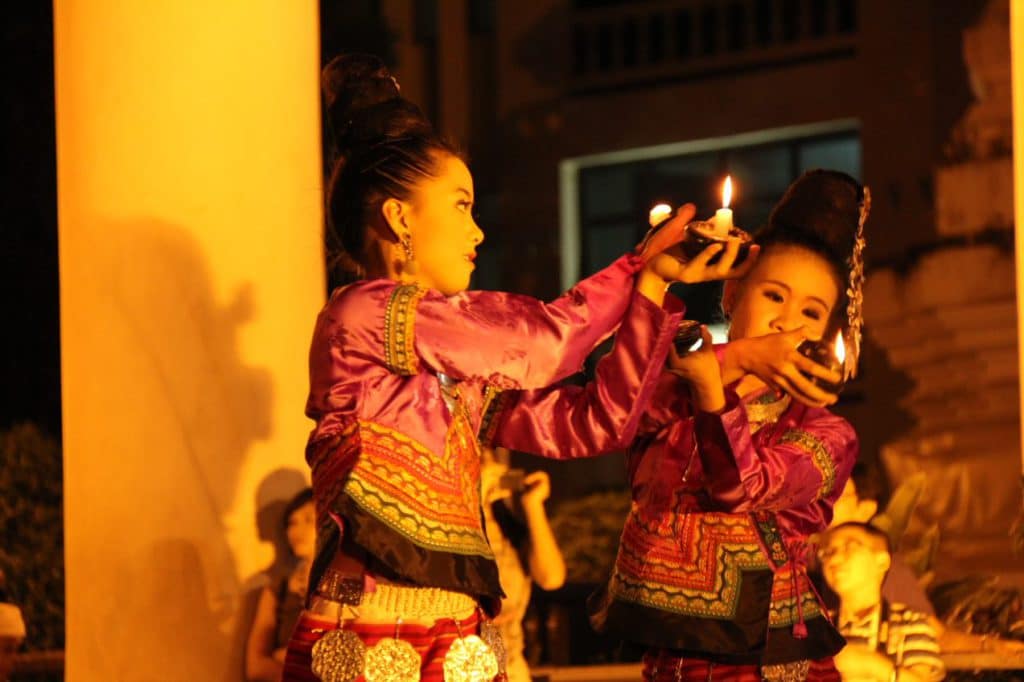
“The aspect that is special to Yi Peng, and a particular highlight in Chiang Mai, is the heightened aspect of light to honour the Buddha. All around the city, in temples and in lanterns, the streets are illuminated with pang prateep, small candles in clay pots. The lighting of lanterns that are released into the night sky also contributes to the enchanting scene, truly creating a festival of light.”
“It’s also nice that the festival becomes a three-day event in Chiang Mai. The first and second nights are occasions to share with the local community, followed by a wider celebration in the city on the third day – this is where revellers are treated to the swarm of lanterns lighting up the night sky as well as the magical reflective qualities of the pang prateep on the water.”
The symbolic nature of the gesture is the same as the floating of the krathong – the releasing of lanterns into the night sky is an act of cleansing first and foremost. It just so happens that the beautiful scene set by the flickering twinkling lanterns lighting up the evening is a fortunate byproduct for Chiang Mai tourism – a photographer’s dream combining tradition, ritual, and culture.
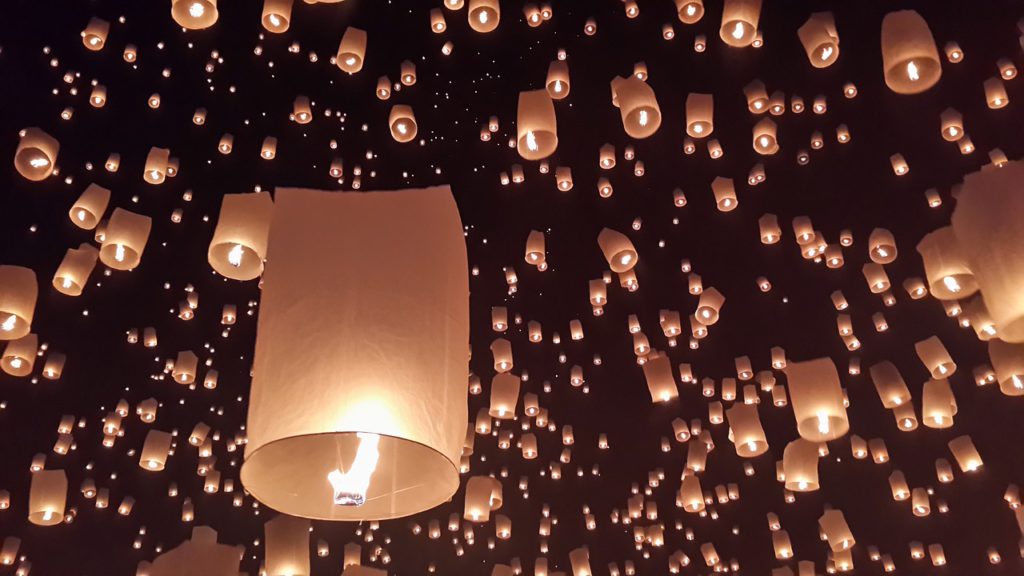
Yi Peng and Loi Krathong in 2020
Numerous factors have obviously threatened to alter proceedings in Chiang Mai this year. The coronavirus situation has meant that the possibility of an influx of tourists has been removed. However, the fact that Thailand has effectively controlled the virus domestically means that the festival can go ahead with minimal changes to the usual festivities. The local population are the prominent participants in the festival, so the lack of tourists in the city will not hugely affect the numbers in attendance at the Ping River.
“My favourite place to go on the third evening of Yi Peng is down by the Ping river”, explains Nuk, “This is the place to be, particularly the area around Narawat bridge, where huge crowds congregate to float their krathongs and let off their lanterns. Of course, this being a Thai festival, everybody is happy, and the atmosphere is buzzing, with plenty of delicious street food on hand too!”
One of the only cancellations is that there will be no parade this year, a measure taken to try to reduce concentrated areas of groupings.
However, this is not the only government intervention. In recent years, there have been growing concerns about the environmental effect of the festivities. Many consider the paper lanterns to have a negative environmental impact, causing potential fires, issues for aviation, and just the general clean up operation required in the aftermath. As a result, the government have banned lanterns within the city, though participants have ignored the ban in the past. It remains to be seen how the ban may affect the festival in the coming years.
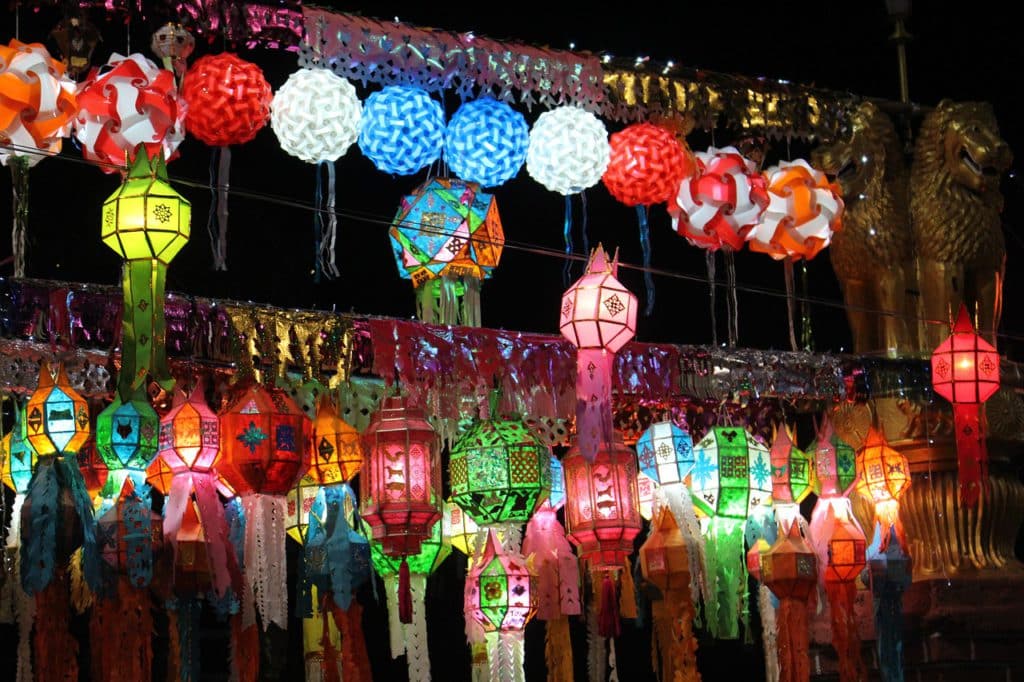
Having said that, there has been a general trend in recent years to revert to more traditional elements of the celebration – the use of pang prateep instead of lanterns, as well as the more widespread use of traditional banana leaves instead of paper or foam krathongs. This happy transition has the combined effect of giving a more historical, authentic feel to the tradition and also being more environmentally-friendly.
“One development in recent years is that more and more people are even making their krathongs from bread. This way, the bread feeds the fish in the water, and there is less waste!”
A further potential issue could be the ongoing protests within the country. However, these protests have been relatively isolated in nature, not affecting day-to-day life in Chiang Mai, and have been peaceful demonstrations. There is no expectation of disruption during the festival.
The Festival in 2021 and Beyond
So, why should travellers look forward to an opportunity to visit Thailand in 2021, and why should they consider factoring in a trip to Chiang Mai during the lantern festival? Nuk helps to welcome visitors:
“Besides the obviously beautiful scenery of the magical, enchanting lanterns in Chiang Mai, the festival is an opportunity for cultural exchange. There is no better way to gain insight and appreciation for a culture than to observe and even participate in their traditions. Immerse yourself in this festival, and you will leave with a better understanding of northern Thai people and their ways. For our part, we welcome the chance to share the experience with visitors too! Although this is a religious festival primarily, it’s extended to a celebration of our culture – a culture we’re happy to share with travellers!”
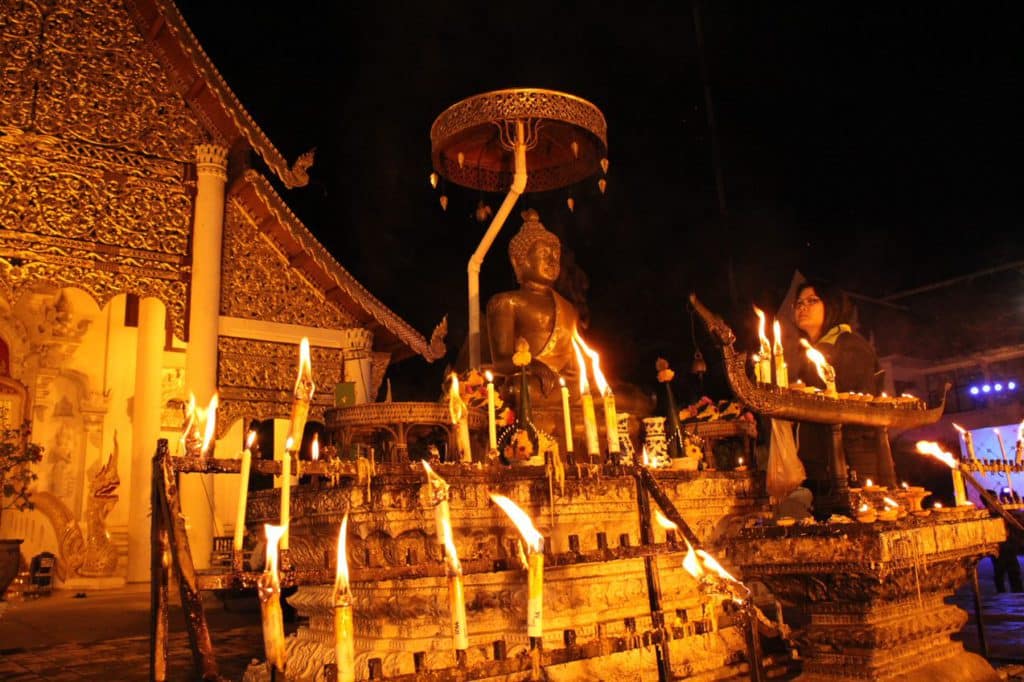
Thailand already has a reputation for being welcoming – a reputation solidified with the unofficial slogan ‘The Land of Smiles’. In an already friendly destination, the warmth that travellers receive is heightened at times of festivities and celebration. At Discova, we can’t wait to help visitors experience this warmth in 2021, and hope that travellers choose to embrace Lanna traditions in Chiang Mai. If you have any queries or questions, don’t hesitate to contact our teams.


